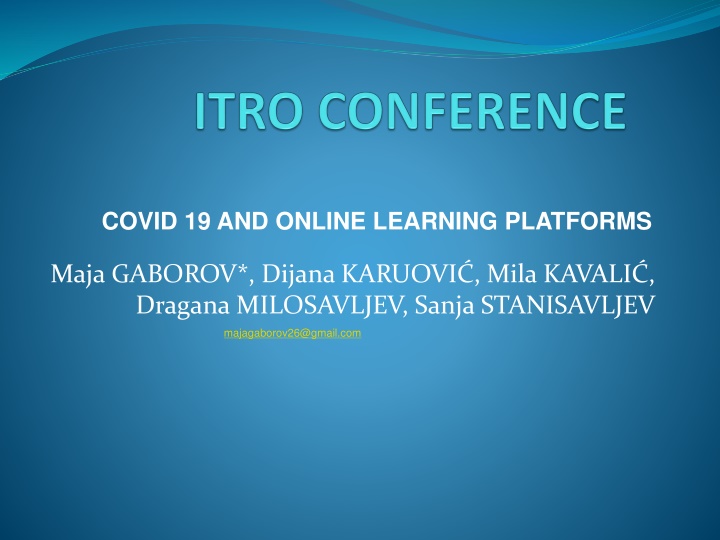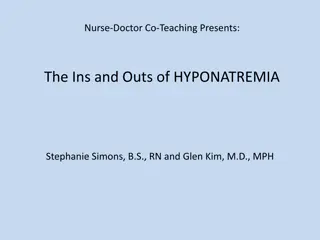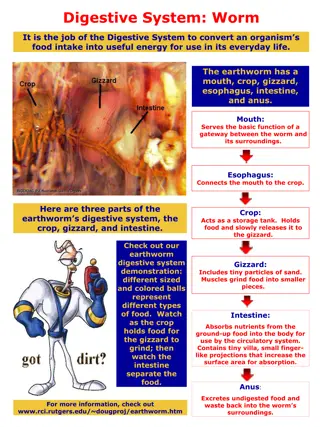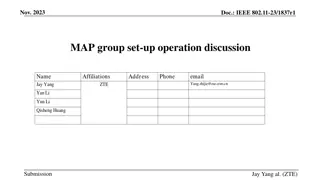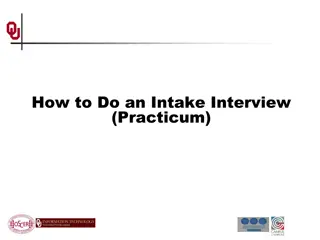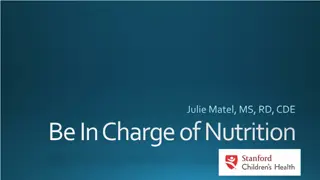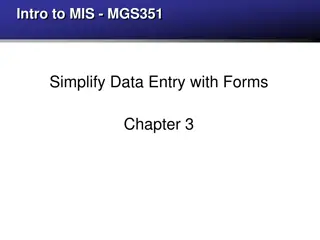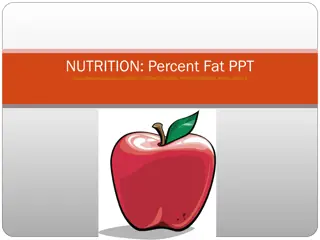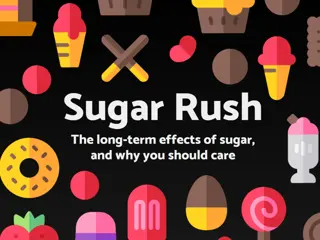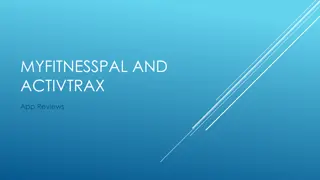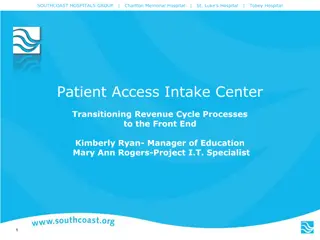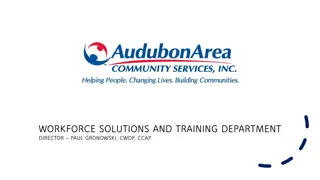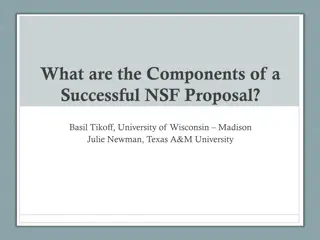Research Management Group Proposal Intake Form: Improving Proposal Process
This proposal outlines the implementation of the Proposal Intake Form (PIF) as part of Research Management Group's process improvement efforts. Standardizing the intake process, the PIF aims to streamline communication between faculty, RPMs, and other stakeholders in the proposal submission process. The pilot phase involved various units, and the roll-out has expanded to include more departments, enhancing efficiency and collaboration.
Download Presentation

Please find below an Image/Link to download the presentation.
The content on the website is provided AS IS for your information and personal use only. It may not be sold, licensed, or shared on other websites without obtaining consent from the author.If you encounter any issues during the download, it is possible that the publisher has removed the file from their server.
You are allowed to download the files provided on this website for personal or commercial use, subject to the condition that they are used lawfully. All files are the property of their respective owners.
The content on the website is provided AS IS for your information and personal use only. It may not be sold, licensed, or shared on other websites without obtaining consent from the author.
E N D
Presentation Transcript
COVID 19 AND ONLINE LEARNING PLATFORMS Maja GABOROV*, Dijana KARUOVI , Mila KAVALI , Dragana MILOSAVLJEV, Sanja STANISAVLJEV majagaborov26@gmail.com
INTRODUCTION The motivation for this work was the sudden pandemic that is present in the Republic of Serbia. The term "e-learning" is one of the most widely used syntax processes today in modern education around the world. Various definitions of e-learning are used. E-learning is a methodology by which "teaching content or learning activities are delivered using electronic technologies"[1]. E-learning involves the application of different forms of information and communication technologies in the education component in order to improve the quality of learning [2]. The role of blended and online learning, including flipped learning as well as the use of various learning management systems or platforms in tertiary education is the subject of much examination amongst scholars. There is growing interest in the way that online or cloud-based tools, and pedagogy implemented to support such tools, might generate greater participation and interaction between students, and between students and their teachers in tertiary education [3]. The next section is something about online learning platforms. The results of research are presented in next section. The Final sections are discussion and conclusions.
BACKGROUND E-learning is a modern method of teaching and learning in academic and other institutions that takes place with the help of information and communication technologies (ICT) where the learner is at the center [6]. Higher distance education offers a scenario for the development of teaching-learning processes through educational platforms and their functionalities for didactic communication, mainly online forum [4]. The learning platform is a way of structuring the instruction that fosters optimal organization of content and interaction with students, and it is used by most of the Universities. Teaching must take advantage of virtual environments and adapting the discourse to the uniqueness of the virtual environments complexity. Learning platforms have been presented as virtual scenarios that promote educational innovation and professional development, more focused on the model of educational personalization, with emphasis on cooperation. [4]. The key elements of a new technological education platform are: a massive open online course (MOOC); learning management systems (LMS); the ecosystem of support for a new education; a new education infrastructure [5]. The utilization of technology improves the quality degree of learning and teaching. One of the most used e- learning platforms is Google Classroom. Google Classroom is developed by Google for academic purposes that support a blended learning platform. This application is so simple to use, does not take too many spaces on the smartphone's memory and help teacher and student keep on the lesson's track. Google Classroom allows teachers to spend more time with their students and less time on the paperwork, and it is now even better. Google's latest announcement brings new functionality to Google Classroom. Included in the new functionality is the ability to add more than one teacher, as well as to preparing for classes in advance as well [7]
Technology has facilitated language learning by introducing platforms for educational purposes. These platforms are also known as Online Management Learning Systems (OMLS) or Course Management Systems (CMS). These systems allow students to connect in groups or individually. These platforms help the students to get access to lectures through handouts or videos. These platforms can help teachers to publish activities and tests for their students and assess them. Some of these platforms are commercial like Blackboard, and others are free and provide open-access for both the teacher and his group like Moodle [8]. Moodle is a free learning management system that enables you to create powerful, flexible, and engaging online learning experiences. Moodle is designed to support a style of learning called Social Constructionist Pedagogy. This style of learning is interactive. The difference between a traditional class and the social constructionist philosophy is the difference between a lecture and a discussion. Moodle enables to add six types of interactive course material.
This is course material that a student interacts with, by answering questions, entering text, or uploading files: Assignment (uploading files to be reviewed by the teacher and/or students) Choice (a single question) Journal (an online journal) Lesson (a conditional, branching activity) Quiz (an online test) Survey (with results available to the teacher and/or students) [9] Moodle also offers five kinds of activities where students interact with each other. These are used to create social course material: Chat (live online chat between students) Forum (you can choose the number of online bulletin boards for each course) Glossary (students and/or teachers can contribute terms to site-wide glossaries) [9].
Picture 1. shows how the respondents answered the question How online teaching? .The answers were as follows: student grupe work on joint projects (26), by hiring professors to pay attention to the work and progress of students (41), by providing additional activities to students in accordance with their interest (35), using digital tools for interactive teaching and online learning (32). [10] learning can improve
How online learning can improve teaching? S t u d e n t 26 B y h i r i 41 B y p r o v 35 U s i n g 32 d NUMBER 0 5 10 15 20 25 30 35 40 45
RESEARCH METHODOLOGY Research is conducted upon the methodology presented as follows: Research goal- The goal is to determine which online learning platforms the student uses during online teaching. Research questions: RQ1: Which online learning platforms did you use during online classes? Hypothesis: Respondents claim that it is best to use Googleclassroom when teaching online. Place and method of research The research was conducted at the Technical Faculty at Zrenjanin by dividing the survey trough social networks. Sample The survey was conducted in the period from 20.04.2020 to 26.04.2020 where the respondents were 83 students from the Technical Faculty in Zrenjanin.
RESULTS AND DISCUSSION Picture 2 shows the online learning platforms that students use. Picture 2. Online learning platforms
To the question of which online platforms students use, there were different answers: Google classroom (43), Moodle (7), Zoom (1), Kahoot (1), Udemy (1), others (35) said that they use none. Suffice it to conclude that students used a small number of online learning platforms.The survey was completed by 79 respondents studying at the faculty in Zrenjanin. Most are aged 19-25. A small number are older than 26. The respondents were from all years. In the first year there were 39 respondents, in the second 13, in the third 12, in the fourth seven and in the master 12 students. The students were from several fields:IT (48), mechanical engineering (6), oil and gas (12), clothing engineering (7), environmental engineering (5) and Management Engineering (5).To the question of which online learning platforms students use, there were different answers: Google classroom (43), Moodle (7), Zoom (1), Kahoot (1), Udemy (1), others (35) said that they use none. Suffice it to conclude that students used a small number of platforms.
CONCLUSION Online learning as one of the forms of e-education, is full and massive in Serbia received practical application during the COVID 19 pandemic. In e-learning, students can determine the pace, place and time of learning, which is also a significant advantage of this type of education. This kind of learning is significant cheaper than classical teaching, the quality of education is at a higher level, time the savings are great, and a large number of students can be educated in a short time. The results of the research show that Google classroom is mostly representative software for online teaching. On the basis of which we can say that the hypothesis was comfired. It would be necessary to investigate whether professors manage during online classes and to see which platform they like to use for teaching, etc.
